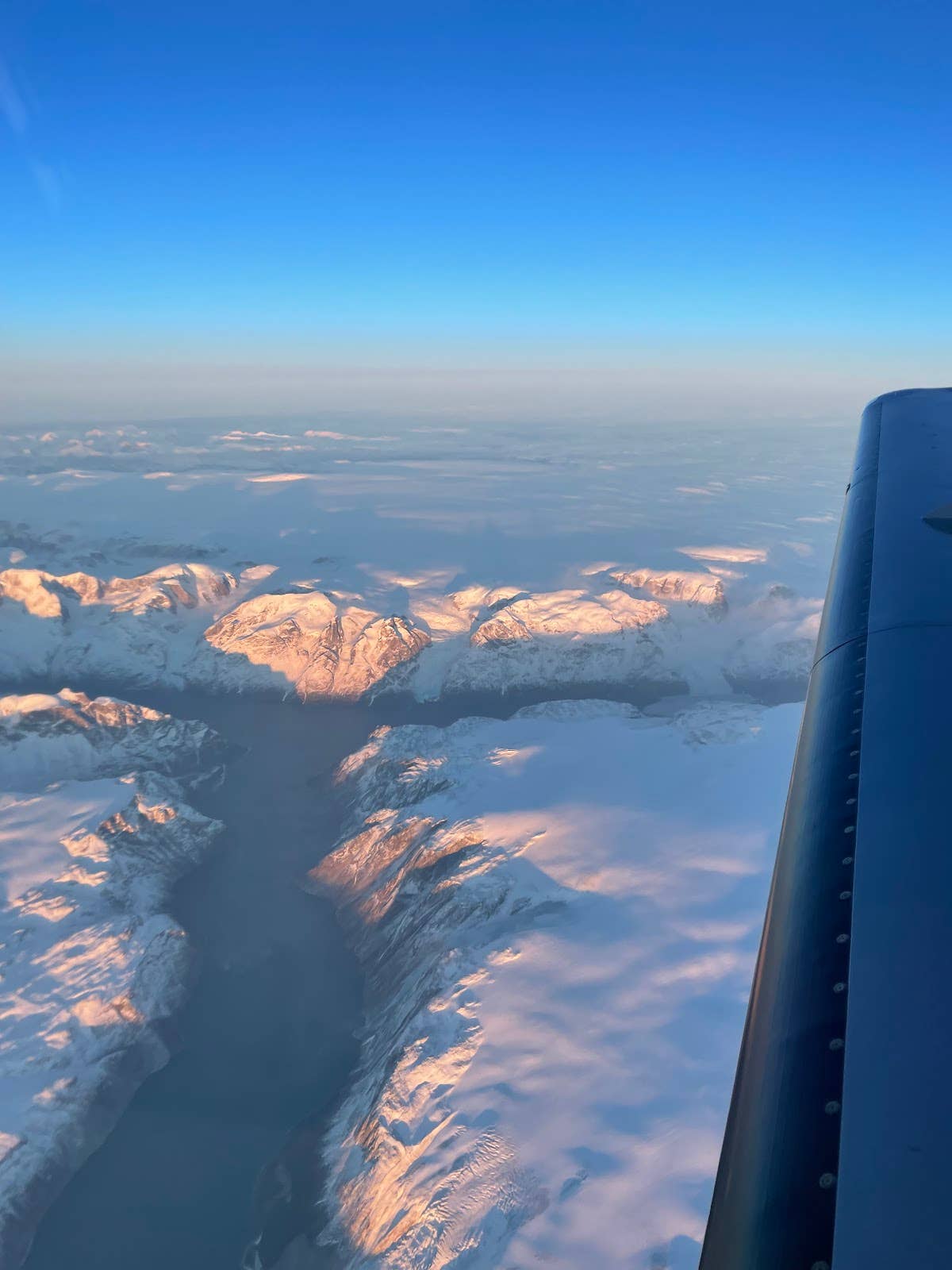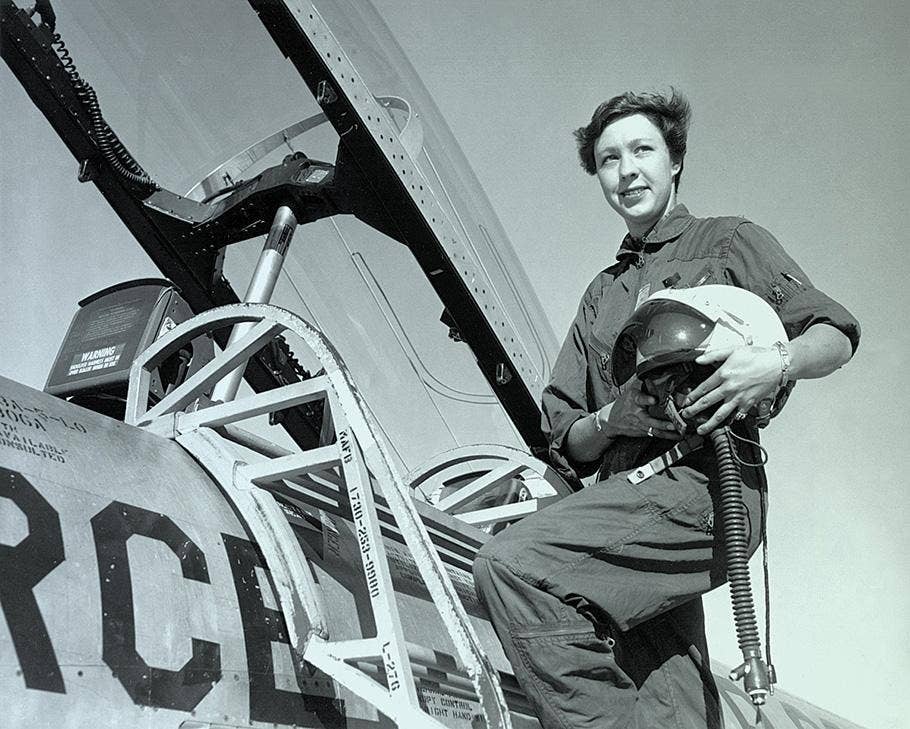Lighthawk Gives Pilots a Reason to Cherish Their Perspective
Lighthawk’s annual meeting provides an opportunity to catch up on why the View From Above remains a critical aspect of aviation—and wildlife and environmental conservation efforts.

The view from above Greenland helped the author understand more immediately how the perspective from a GA aircraft—operating efficiently and in the near future burning sustainable aviation fuel—can assist us in shepherding conservation efforts around the world. [Julie Boatman]
Lighthawk hosted its annual fly-in and meeting in Dulles, Virginia, last weekend, with events at the Westin Washington Dulles and the National Air & Space Museum’s Steven F. Udvar-Hazy Center. Through past work we’ve collaborated on, the organization invited me to present and attend both the weekend sessions and the banquet dinner.
At FLYING, we continue to bring our readers stories about how to become a pilot, what to fly, and how to expand our horizons flying ourselves over this marvelous land.
I was introduced to Lighthawk’s mission many years ago—and had the opportunity to bring the story to our readers through a typical flight with volunteer pilot Steve Kent and regional coordinator Jonathan Milne back in February 2020.
The incredible amount of knowledge gained on a mission like this—surveying and photographing the Delaware River delta southeast of Philadelphia to assess environmental changes—drove home the importance of Lighthawk’s work in opening eyes through this view from above.
And we need that message, over and over, that the view from above is critical to helping us understand our world, our impact upon it, and how we can fly to a more sustainable future.
A Unique Perspective on Change
In November 2021, I had the opportunity to join a veteran ferry pilot on the delivery of a new Daher TBM 940 from the factory in France to the U.S.
During the second day of the flight, the wide expanse of Greenland lay out before us as we crossed the first waypoint that consisted of numbers—66N40W—rather than a pronounceable fix. We’d spent an hour over the water, heading west from our departure from Keflavik, Iceland. We’d spend another two and a half hours crossing the land ahead.
Below, icy escarpments were carved into the sides of the massive mountainous frozen world, and they appeared to drop straight into the ocean, belying the fact that the terrain from the ocean to the top of the ice cap itself ranged from sea level to 10,000 feet msl in the slice of it laying ahead of us.
Things look different from 28,000 feet, just 18,000 feet above the surface—and even lower as we descended for landing in Iqaluit, Canada.
That icecap is by most measures receding—but some people don’t want to see it, selectively seeing what they want to see—or watching the changes happen so incrementally that they don’t register. It’s hard to see from an airline window.
Maybe they need a Lighthawk flight or two, down at a low altitude, so that the perspective would change enough to make the obvious changes in the landscape hit home.
More Perspective: Everglades, SFO, and FlyZolo
The sessions and closing dinner at this year’s meeting offered an opportunity to learn from others who have contributed to both Lighthawk’s mission and global conservation movements—through education, data collection and trend monitoring, and sharing views from very special flights around the world.
The San Francisco International Airport (KSFO) has been among the top commercial hubs in transforming its operations to those that make less of an impact both on its neighbors in the Bay Area, and globally with respect to emissions and other measurable elements.
SFO’s Erin Cooke is the airport’s sustainability director, and she reported on the airport’s success in everything from limiting its waste streams to providing sustainable aviation fuel. Because of its efforts, SFO ranks high among U.S. airports in achieving these goals, and favorably among its international peers. Though I don’t see SFO taking steps as drastic as Amsterdam’s Schiphol (EHAM) does—such as a proviso to halt all departures if emissions reach an as-yet limit—general aviation airports can learn from its work. The big message? If we stay ahead of the imposed limits, we can keep aviation flowing while helping local environments.
The Everglades Foundation has taken advantage of a longstanding relationship with Lighthawk to capture the ever-changing landscape of central and south Florida. Steve Davis, chief science officer for the organization, updated the group on the latest at the annual meeting. Volunteer pilots in the Miami area use their aircraft—including a Gippsland AirVan—to take scientists, media, and policymakers aloft to monitor a range of concerns. From recent toxic algae blooms and red tides, to gauging the success of the Tamiami Tunnels in restoring southward water flowing from Lake Okeechobee through the ’Glades to the Keys—the photos Davis shared illustrated the power of those views from GA aircraft.
At the dinner, Zara Rutherford, of FlyZolo, told the story of her recent solo flight around the world in the Shark LSA. It took her five months—in part because she had to fly during day VFR conditions—and she crossed antipodes and northern climes. One takeaway? How much climate drives the cultures of the places she visited—and how sea level rise has already significantly impacted many coastal communities. And how human intervention—in the guise of temperature changes—has brought polar bears into town in Greenland. A local headmistress related to Rutherford how the children had to use caution now walking to school.
Back to that View
My letter from the editor in each issue of FLYING magazine—and the opinion pieces I share online—I call “View From Above” because that has always been one of the most compelling aspects of flight to me.
And perhaps that’s why Lighthawk’s mission instantly resonated with me—and my experience flying with longtime volunteers Kent and Milne solidified the deal.
What have you seen from the pilot’s seat that has resonated with you? I’d like to hear from you. Email me at julie@flying.media with your own “view from above.”

Sign-up for newsletters & special offers!
Get the latest FLYING stories & special offers delivered directly to your inbox






